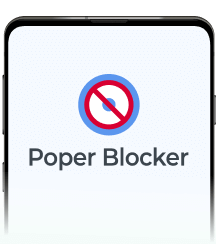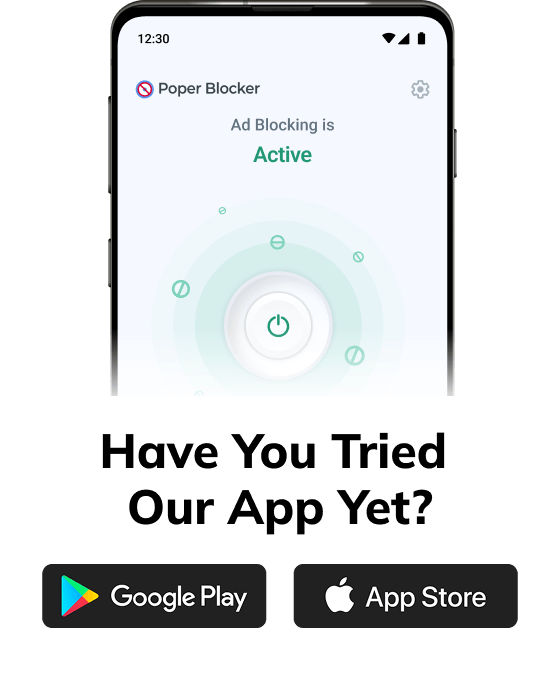According to a HubSpot study, a significant 73% of consumers express a dislike for online pop-up ads. While this sentiment may not be surprising, the persistence of these ads in the digital landscape is noteworthy. As reported by OptiMonk, pop-up ads maintain an average conversion rate of 11%, with the most effective ones achieving a remarkable 42% conversion rate.
This stark contrast highlights the ongoing relevance and impact of pop-up advertising in the online world. These unexpected digital guests often disrupt our online activities, leading to frustration and decreased productivity. So how can you stop pop-up ads, and can they truly be blocked? Continue reading to discover the answer.
Why Block Pop-up Ads?
1. Eliminating Unwanted Interruptions
Pop-up ads are more than a minor annoyance; they are a significant disruption to your online activities. These ads can appear unexpectedly, interrupting your workflow or leisurely browsing. They often cover essential content on the screen, forcing you to pause and find a way to close them. This constant interruption not only hampers productivity but also detracts from the overall enjoyment of your online experience.
2. Safeguarding Against Security Risks
Beyond being a source of irritation, pop-up ads can pose serious security risks. Some of these ads are designed to mislead users into downloading malware or falling victim to phishing scams. Clicking on a seemingly harmless pop-up could inadvertently lead to the installation of harmful software that compromises your device’s security and your personal information. Blocking pop-ups is a proactive step in safeguarding your online security.
3. Improved Page Loading Speed
Pop-up ads consume additional data and can slow down page loading times. This is particularly noticeable on websites with multiple pop-ups or devices with limited processing power. By blocking these ads, you can enjoy faster browsing speeds, making your online experience smoother and more efficient.
4. Enhanced User Experience
Websites cluttered with pop-up ads can be visually overwhelming and detract from the content you’re trying to access. Blocking distractions brought by these ads leads to a cleaner, more organized display of information, allowing you to focus on the content that matters to you without constant annoyances.
5. Reduced Data Usage
For users with limited data plans, pop-up ads can be a hidden drain on data resources. These ads, especially those with multimedia elements, can consume a significant amount of data. Blocking them helps conserve your data usage, which is particularly beneficial when browsing on mobile devices or in areas with limited connectivity.
6. Protecting Children from Inappropriate Content
Pop-up ads don’t discriminate in their audience. When children are using the internet, they can be exposed to inappropriate or harmful content through these ads. Blocking pop-ups helps create a safer online environment for children, ensuring that they are not exposed to content that is not age-appropriate.
How Do I Stop Pop-up Ads with Poper Blocker?
Poper Blocker is an exceptional solution for those wondering how to stop pop-up adverts. This browser extension, effortlessly downloadable and installable, empowers you to swiftly block those pesky ads. Here’s a quick guide on how to harness the capabilities of this popup blocker:
1. Install the Poper Blocker Browser Extension
Initiating your journey towards a pop-up-free browsing experience begins with a simple installation of the Poper Blocker extension. This process is straightforward and user-friendly, ensuring that even those not tech-savvy can easily enhance their browsing experience.
Start by visiting your browser’s extension store and searching for Poper Blocker. With a single click, you can add this powerful tool to your browser. Once installed, the extension integrates seamlessly, requiring no complex setup or configuration.
2. Access the Advanced Settings
Poper Blocker stands out with its customizable features, allowing you to tailor your browsing experience according to your preferences. Upon opening the app, you’ll find the ‘Advanced Settings’ section, a control center for managing pop-ups.
3. Turn on “Block basic popups”
Here, you can activate ‘Block basic popups’, which stops pop-ups that open in new windows or tabs. This feature is crucial for maintaining focus and avoiding disruptive advertising tactics.
4. Turn on “Block advanced popups (overlays)” for a more refined blocking
For those seeking an even more robust solution, turning on ‘Block advanced popups (overlays)‘ is the way to go. This feature targets pop-ups that appear directly on the page you’re viewing, providing an additional layer of protection.
It’s particularly useful for blocking those pesky overlays that can hinder your reading or shopping experience on websites.
Tip: Incognito Browsing with Poper Blocker
Poper Blocker’s versatility extends to incognito mode, offering the same level of protection even when browsing privately. To enable this feature, navigate to your browser’s ‘Manage Extensions’ section. Locate Poper Blocker, click on ‘Details’, and then select ‘Allow in incognito’.
Here’s a trick: Via Poper Blocker’s dashboard, there’s an “Enabling Poper Blocker in incognito” section. This is a shortcut to access this setting and all you need to do is click the “Take me there” button.
In addition to its primary function, this extension offers a range of valuable features. Notably, you can block pop-up ads on streaming sites such as YouTube, effectively hide ads on social media platforms, and much more, enhancing your overall online experience.
A Cleaner, Safer Browsing Journey Awaits
Stepping into a world free from the annoyance of pop-up ads is not just about enhancing your browsing experience; it’s about embracing a safer and more focused online environment. With tools like Poper Blocker, you gain control over what appears on your screen, ensuring that your online activities remain uninterrupted and your personal information stays secure. This proactive approach to managing online content not only minimizes distractions but also fortifies your defense against potential cyber threats hidden in pop-ups.
As you utilize these powerful tools and enjoy the benefits of using an ad blocker, remember that the key to a cleaner, more enjoyable online experience lies in the choices you make about how you interact with the digital world. By choosing to block unwanted pop-ups, you’re not just avoiding annoyance; you’re taking a significant step towards a more efficient and secure online presence.
Ready for an ad-free journey? Install Poper Blocker today!
FAQs
What are the risks of disabling pop-up blockers?
Disabling pop-up blockers can significantly increase your exposure to intrusive advertisements and potentially harmful content. Without these blockers, your browsing experience can be disrupted by frequent and unwanted ads. More importantly, some pop-ups may contain malicious software or phishing attempts, which can compromise your personal information and computer security. It’s crucial to weigh the need for certain site functionalities against these potential risks when considering disabling your popup blocker.
Can pop-up blockers affect website functionality?
Yes, in some cases, pop-up blockers can interfere with the functionality of websites that legitimately use pop-ups for essential features. This includes scenarios like logging into a site, completing web forms, or accessing interactive content. If you trust the website and require these functionalities, you may need to disable the ad blocker temporarily or add the site to an exceptions list. However, it’s important to do this selectively and only for websites you trust completely.
Are all pop-ups harmful or malicious?
Not all pop-ups are designed with harmful intent. Many websites use pop-ups for legitimate purposes, such as displaying login forms, providing additional information, or even alerting users to important updates. It’s the context and source of the pop-up that often determines its safety. Pop-ups from reputable and trusted websites are generally safe, whereas those from unknown or suspicious sources should be treated with caution.
How do I differentiate between safe and unsafe pop-ups?
Identifying the safety of a pop-up often comes down to recognizing a few key indicators. Safe pop-ups typically originate from trusted sources and are relevant to the content or activity on the website. They don’t ask for personal information or prompt you to download unknown software. Unsafe pop-ups, on the other hand, may feature aggressive advertising, request sensitive information, or warn of a nonexistent virus on your device. They might also appear randomly and not be related to your current web activity.
Can pop-up blockers block all types of pop-ups?
While modern pop-up blockers like Poper Blocker are highly effective, some sophisticated pop-ups might still slip through. These blockers are designed to stop most types of pop-ups, including those that open in new windows or tabs and overlays that appear on the current page. However, some pop-ups, especially those intricately embedded in website scripts or triggered by complex user interactions, might not be consistently blocked. Regular updates to pop-up blocking software and browsers can help in addressing these evolving challenges.


